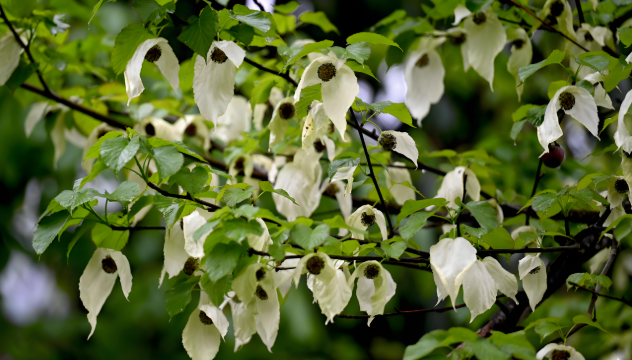Davidia involucrata Baill, also called the dove tree, handkerchief tree or water pear, is a medium-sized deciduous tree native to south central and southwest China from Hubei to southern Gansu, south to Guizhou, Sichuan and Yunnan. Davidia involucrata Baill has been listed as a national key protected wild plant and a national first-class protection plant. It is a rare relict plant and a famous ornamental plant in the world. The species was introduced from China to Europe and North America in 1904, and is a popular ornamental tree in parks and larger gardens.

Davidia involucrata Baill is a moderately fast-growing tree, pyramidal in shape, growing to up to 15 meters to 20 meters in height. The dark grey bark often scales off in flakes. The large bright-green leaves, shaped like a heart or an oval, are mostly 10cm–20cm long and 7cm–15cm wide. Davidia involucrata Baill is best known for its exquisite flowers. The Latin word “involucrata”, part of the English name of the tree, means a flower surrounded by a ring of bracts. There are two bracts of different sizes surrounding each flower, one up to 16cm long and the other half as long. Originally the bract is light green, then turns milky, and in the end straw yellow. The flowers are at their best in late May. On a breezy day, the bracts flutter in the wind like white doves or handkerchiefs, hence the names of this tree.
